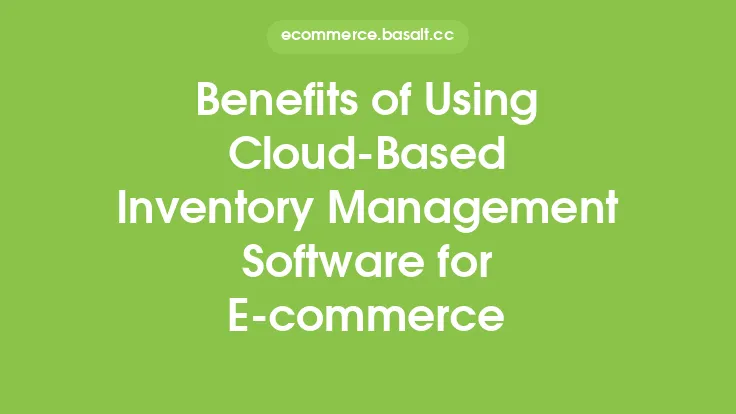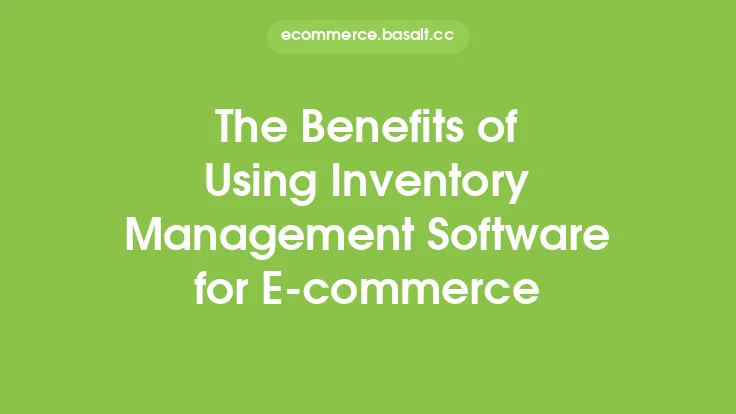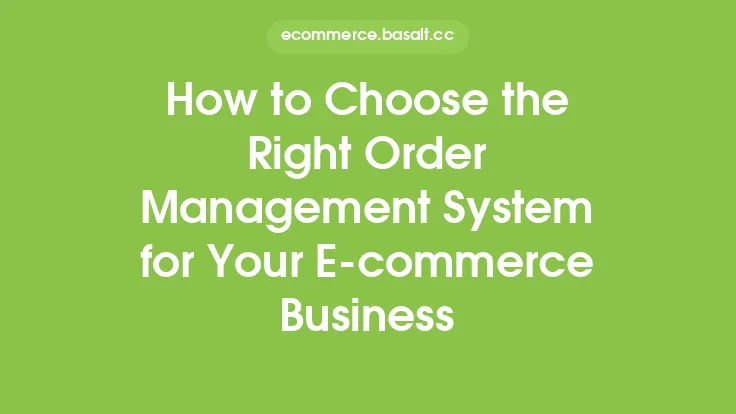Implementing an order management system (OMS) can be a game-changer for e-commerce businesses, providing a wide range of benefits that can help take their operations to the next level. At its core, an OMS is designed to streamline and automate the order fulfillment process, from receiving and processing orders to shipping and delivering products to customers. By leveraging an OMS, e-commerce businesses can improve their efficiency, reduce costs, and enhance the overall customer experience.
What is an Order Management System?
An order management system is a software solution that enables e-commerce businesses to manage their orders from a single platform. It provides a centralized hub for processing orders, tracking inventory, and managing shipments, making it easier for businesses to stay on top of their operations. With an OMS, businesses can automate many of the manual tasks associated with order fulfillment, such as printing shipping labels, sending confirmation emails, and updating order status.
Benefits of Implementing an Order Management System
The benefits of implementing an OMS are numerous and can have a significant impact on an e-commerce business's bottom line. Some of the key benefits include:
- Improved order accuracy: An OMS can help reduce errors and improve order accuracy by automating the order fulfillment process and providing real-time updates on order status.
- Increased efficiency: By automating many of the manual tasks associated with order fulfillment, an OMS can help businesses process orders more quickly and efficiently, reducing the time and resources required to fulfill orders.
- Enhanced customer experience: An OMS can help businesses provide a better customer experience by providing real-time updates on order status, sending automated confirmation emails, and enabling customers to track their orders online.
- Better inventory management: An OMS can help businesses manage their inventory more effectively by providing real-time updates on stock levels, enabling them to avoid overselling and reduce the risk of stockouts.
- Reduced costs: By automating many of the manual tasks associated with order fulfillment, an OMS can help businesses reduce their labor costs and improve their profitability.
How an Order Management System Can Improve Operational Efficiency
An OMS can improve operational efficiency in a number of ways, including:
- Automating manual tasks: An OMS can automate many of the manual tasks associated with order fulfillment, such as printing shipping labels, sending confirmation emails, and updating order status.
- Streamlining workflows: An OMS can help businesses streamline their workflows by providing a centralized platform for managing orders, inventory, and shipments.
- Providing real-time updates: An OMS can provide real-time updates on order status, inventory levels, and shipment tracking, enabling businesses to stay on top of their operations and make informed decisions.
- Enabling scalability: An OMS can help businesses scale their operations more easily by providing a flexible and adaptable platform for managing orders and inventory.
The Role of Integration in Order Management
Integration plays a critical role in order management, enabling businesses to connect their OMS with other systems and platforms, such as e-commerce platforms, inventory management systems, and shipping carriers. By integrating their OMS with other systems, businesses can:
- Automate data exchange: Integration enables businesses to automate the exchange of data between systems, reducing the need for manual data entry and improving accuracy.
- Improve visibility: Integration provides businesses with real-time visibility into their operations, enabling them to track orders, inventory, and shipments from a single platform.
- Enhance flexibility: Integration enables businesses to adapt to changing market conditions and customer needs by providing a flexible and scalable platform for managing orders and inventory.
Best Practices for Implementing an Order Management System
Implementing an OMS requires careful planning and execution to ensure a smooth transition and maximize the benefits. Some best practices for implementing an OMS include:
- Defining business requirements: Businesses should define their business requirements and identify the key features and functionalities they need from an OMS.
- Selecting the right vendor: Businesses should select a vendor that has experience in implementing OMS solutions and can provide the necessary support and training.
- Configuring the system: Businesses should configure the OMS to meet their specific needs and requirements, including setting up workflows, integrating with other systems, and defining user roles and permissions.
- Testing and training: Businesses should test the OMS thoroughly and provide training to users to ensure a smooth transition and minimize disruptions to operations.
Conclusion
In conclusion, implementing an order management system can have a significant impact on an e-commerce business's operations, providing a wide range of benefits that can help improve efficiency, reduce costs, and enhance the customer experience. By understanding the benefits and best practices for implementing an OMS, businesses can make informed decisions and maximize the benefits of this powerful technology. Whether you're a small startup or a large enterprise, an OMS can help you streamline your operations, improve your profitability, and stay ahead of the competition in today's fast-paced e-commerce landscape.





